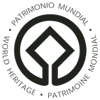 |
UNESCO World Heritage for Spain |
 |
|---|
UNESCO World Heritage Sites represent some of the best natural, cultural and historic attractions in world travel. Below are details of the 45 cultural, natural and mixed sites inscribed for Spain to date (a red World Heritage symbol denotes a site currently regarded as endangered). For more details of these properties, click on the links to the UNESCO website and the photographic galleries of these sites from OurPlace (where available). Also, check out UNESCO's Intangible Cultural Heritage for Spain below.

Intangible Cultural Heritage
Recently UNESCO has begun to document the world's Intangible Cultural Heritage which includes "traditions or living expressions inherited from our ancestors and passed on to our descendants, such as oral traditions, performing arts, social practices, rituals, festive events, knowledge and practices concerning nature and the universe or the knowledge and skills to produce traditional crafts". The current listings for Spain are shown below - click on the links for more details.
Representative List of the Intangible Cultural Heritage of Humanity
Programmes, projects and activities for the safeguarding of intangible cultural heritage considered to best reflect the principles and objectives of the Convention
 | 2009 - Centre for traditional culture – school museum of Pusol pedagogic project |
|---|---|
 | 2011 - Revitalization of the traditional craftsmanship of lime-making in Morón de la Frontera, Seville, Andalusia |



